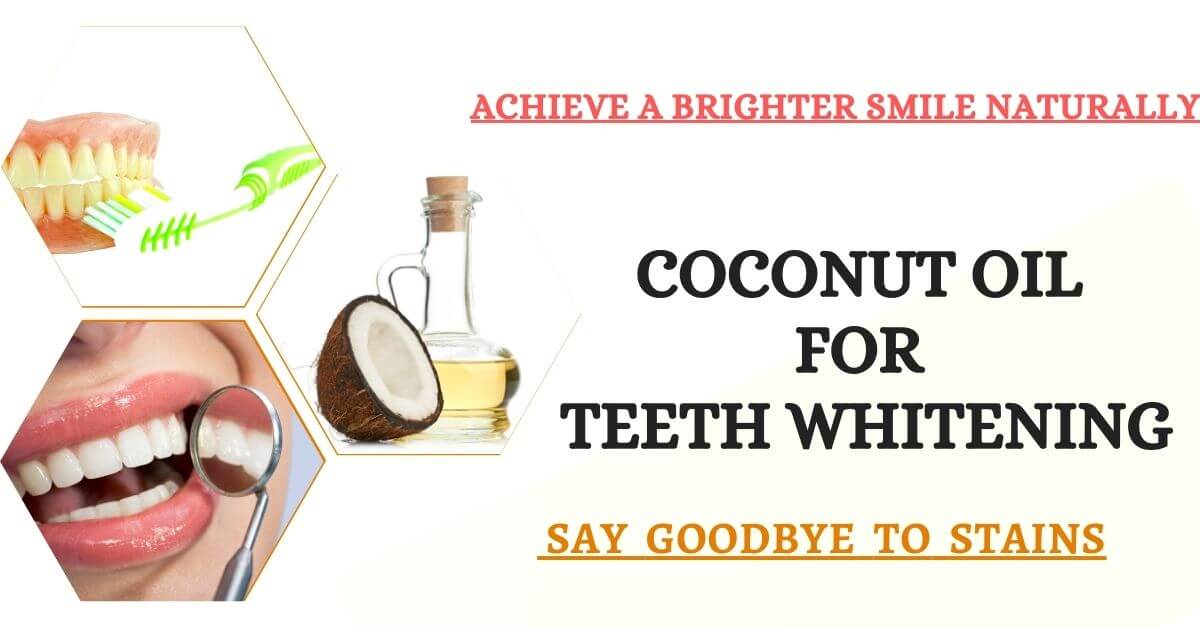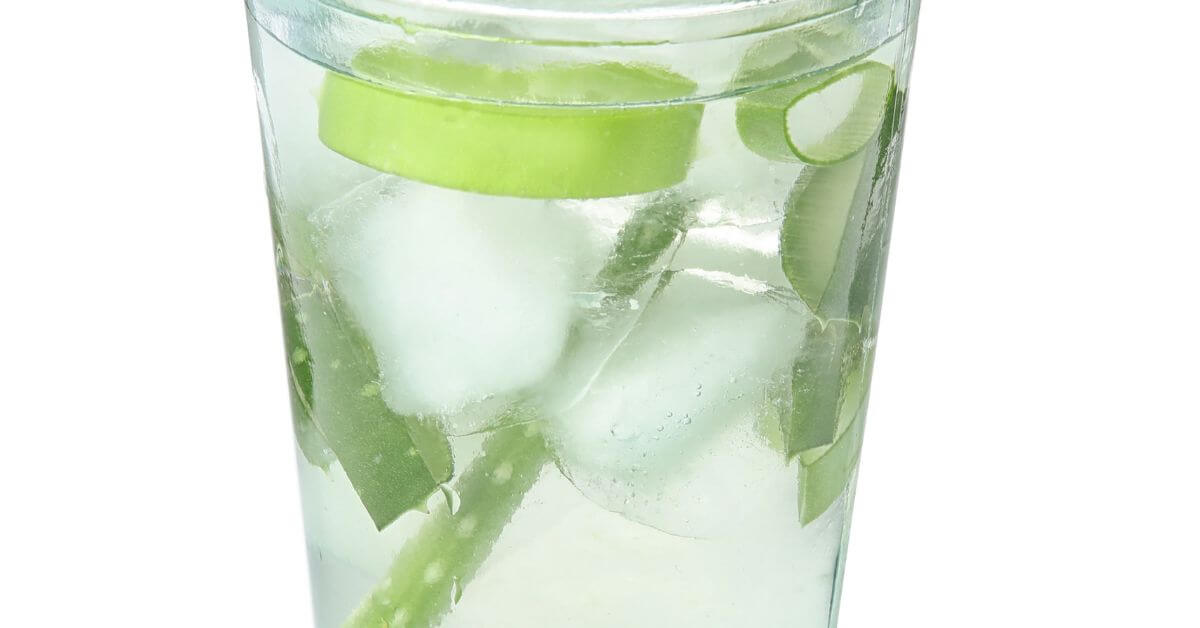A bright, white smile is often associated with beauty, confidence, and overall oral health. We all desire that sparkling set of teeth that leaves a lasting impression. Fortunately, there’s a natural and effective solution that can help you achieve just that – coconut oil for teeth whitening. In this article, we’ll delve into the wonders of this versatile oil and how it can help you say goodbye to stubborn dental stains.
Coconut oil, with its numerous health benefits, has emerged as a popular alternative for achieving a whiter smile against expensive teeth whitening treatments or harsh chemicals. By harnessing the power of nature, coconut oil has the potential to transform your teeth and restore their natural radiance.
The effectiveness of coconut oil for removing dental stains is backed by its unique properties and scientific evidence, making it a promising solution for teeth whitening.
What are teeth stains?
A bright, white smile can leave a lasting impression and boost our confidence. However, over time, our teeth can become stained and lose their luster. To effectively combat teeth stains, it’s important to understand their different types, causes, and the significance of maintaining oral hygiene. Explore how we can restore our smile’s natural radiance.
Types of Teeth Stains
Teeth stains can be broadly categorized into two types:
- Extrinsic stains and
- Intrinsic stains.
Extrinsic stains are superficial stains that occur on the outer layer of the tooth, known as the enamel. These stains are often caused by external factors such as certain foods, beverages, and habits like smoking. Common culprits include coffee, tea, red wine, berries, and tobacco. Extrinsic stains usually appear as yellow or brown discoloration on the tooth surface and can be effectively treated with various whitening methods.
Intrinsic stains originate from within the tooth and affect the underlying dentin layer. These stains may result from factors such as dental trauma, certain medications, or excessive fluoride during tooth development. Intrinsic stains are typically more challenging to remove, requiring professional dental interventions for optimal results.
Common Causes of Teeth Stains
Understanding the causes of tooth stains is crucial for both prevention and treatment. Some common culprits include:
1. Food and Beverages: Certain foods and beverages contain chromogens, pigmented compounds that have the potential to stain teeth. Coffee, tea, red wine, dark berries, and tomato-based sauces are known to contribute to teeth discoloration.
2. Tobacco Use: Smoking or chewing tobacco poses serious health risks and leads to stubborn teeth stains. The nicotine and tar present in tobacco can penetrate the enamel, causing deep discoloration that is difficult to remove.
3. Poor Oral Hygiene: Inadequate oral hygiene practices can contribute to the development of plaque and tartar, which can lead to teeth stains over time. Regular brushing, flossing, and professional dental cleanings are essential for maintaining a healthy smile.
4. Aging: As we age, our teeth naturally undergo changes. The enamel may become thinner, exposing the underlying dentin, which is naturally yellowish in color. This can give the appearance of teeth stains or discoloration.
Does Coconut Oil Whiten Teeth?
While there are numerous commercial teeth whitening products available, many of them contain harsh chemicals that may cause sensitivity or damage to the teeth and gums. This is where natural solutions like coconut oil for teeth whitening can play a valuable role. Coconut oil possesses antimicrobial properties and can help remove plaque and surface stains. Its gentle and natural approach makes it a safe and effective option for achieving a brighter smile.
Coconut Oil for Teeth Whitening
Coconut oil is derived from the meat of mature coconuts and is composed mainly of medium-chain fatty acids (MCFAs). These MCFAs, particularly lauric acid, caprylic acid, and capric acid, possess antimicrobial, anti-inflammatory, and antioxidant properties. When it comes to teeth whitening, these components play a crucial role in removing stains and promoting overall oral health.
Scientific studies or expert opinions support the effectiveness of coconut oil for teeth whitening.
Several scientific studies and expert opinions support using coconut oil for teeth whitening. A study published in the Nigerian Journal of Medicine found that oil pulling with coconut oil significantly reduced plaque formation and improved overall oral health. Another study published in the Journal of Traditional and Complementary Medicine highlighted the antimicrobial properties of coconut oil, which can help combat the bacteria responsible for tooth staining.
Dental professionals and experts in the field have also endorsed the use of coconut oil for teeth whitening. They emphasize its natural approach, affordability, and lack of harsh chemicals often found in conventional whitening treatments. Many individuals who have incorporated coconut oil into their oral care routine have reported noticeable improvements in teeth whiteness and oral health.
How to Use Coconut Oil For Teeth Whitening?
A. Provide detailed instructions on how to use coconut oil for teeth whitening.
1. Start with a tablespoon of organic, cold-pressed coconut oil.
2. Swish the oil in your mouth for approximately 10-15 minutes, ensuring it reaches all areas.
3. Spit out the oil into a trash can (avoid spitting into the sink to prevent clogging).
4. Rinse your mouth thoroughly with water.
5. Brush your teeth as usual to remove any remaining oil residue.
How does coconut oil work to remove stains from teeth?
Coconut oil works through a process known as oil pulling. When swished in the mouth, the oil acts as a natural cleanser and helps to remove surface stains. The lipids in coconut oil attract and bind with the molecules responsible for discoloration, pulling them away from the tooth surface. As a result, regular oil pulling with coconut oil can gradually reduce the appearance of stains, revealing a whiter smile.
Oil pulling technique and its benefits for oral health.
Oil pulling, the technique described above, has been used for centuries as a traditional Ayurvedic practice to improve oral health. In addition to teeth whitening, oil pulling with coconut oil offers numerous benefits. It helps eliminate harmful bacteria, reduces bad breath, promotes gum health, and soothes inflammation in the oral cavity. Regular oil pulling can contribute to a cleaner, healthier mouth.
Tips and Precautions to ensure safe and effective use of coconut oil for teeth whitening.
To ensure safe and effective use of coconut oil for teeth whitening, consider the following tips and precautions:
– Use organic, cold-pressed, and unrefined coconut oil for best results.
– Begin with shorter swishing durations and gradually increase the time as you get comfortable.
– Avoid swallowing the oil as it may contain bacteria and toxins from the mouth.
– Spit the oil into a trash can to prevent clogging of the sink.
– Brush your teeth after oil pulling to remove any residual oil and maintain oral hygiene.
– Consult with your dentist if you have any oral health concerns or specific conditions.
Additional Natural Remedies for Teeth Whitening
In addition to coconut oil, several other natural ingredients can enhance the teeth-whitening process. Baking soda, hydrogen peroxide, activated charcoal, and lemon juice are commonly used in homemade teeth-whitening remedies due to their mild abrasive or bleaching properties.
- Baking soda acts as a gentle abrasive that helps scrub away surface stains.
- Hydrogen peroxide, when used in appropriate concentrations, can help lighten tooth discoloration.
- Activated charcoal has absorbent properties that bind to stains and remove them from the teeth.
- Lemon juice contains natural bleaching agents that can brighten the teeth’s appearance.
Homemade teeth whitening recipes using these ingredients.
Combine coconut oil with these ingredients to create homemade teeth-whitening pastes or rinses. For example, mix a tablespoon of coconut oil with a teaspoon of baking soda and a few drops of hydrogen peroxide to form a paste. Apply it to your toothbrush and brush gently for a few minutes. Remember to use these remedies in moderation and discontinue use if you experience any adverse effects.
How to Maintain a Bright Smile?
- After achieving your desired teeth whitening results, it’s important to maintain them. Regular oral hygiene practices such as brushing twice a day, flossing, and using mouthwash are essential for removing surface stains and preventing new ones from forming. Additionally, consider using whitening toothpaste to help maintain the brightness of your smile.
- Mention lifestyle changes, such as avoiding stain-causing foods and beverages.
- Certain foods and beverages can contribute to teeth staining. Coffee, tea, red wine, berries, and tobacco products are common culprits. Limiting or avoiding these stain-causing substances can help preserve your teeth’s whiteness.
- Maintaining overall dental health is crucial for long-term oral care and maintaining a bright smile. Regular dental check-ups, professional cleanings, and following your dentist’s recommendations for oral care can help prevent tooth discoloration and address any underlying oral health issues.
- Maintaining good oral hygiene is crucial not only for overall dental health but also for preventing and managing tooth stains. Brushing your teeth at least twice daily, flossing regularly, and using mouthwash can help remove surface stains and control plaque buildup.
- Additionally, visiting your dentist for professional cleanings and check-ups is vital to address any underlying oral health issues and receive personalized advice on teeth whitening options.
Conclusion
In conclusion, understanding the different types of teeth stains, their causes, and the significance of maintaining oral hygiene is key to effectively managing and preventing teeth discoloration. By adopting a proactive approach to oral care and seeking natural solutions, such as coconut oil for teeth whitening, we can restore our smile’s brilliance and maintain optimal dental health. Remember, a healthy and radiant smile goes beyond aesthetics—it is a reflection of our overall well-being.
The science behind coconut oil for teeth whitening reveals its remarkable properties and effectiveness in removing dental stains. Backed by scientific studies and expert opinions, coconut oil provides a natural and affordable alternative to traditional teeth whitening methods. By following a step-by-step guide to using coconut oil, exploring additional natural remedies, and maintaining good oral hygiene, you can achieve a radiant, stain-free smile.
Embrace this natural approach, say goodbye to stains, and embark on a journey toward a brighter smile. Share your experiences or ask questions in the comments section below. Let’s spread the joy of a healthier, whiter smile together!



